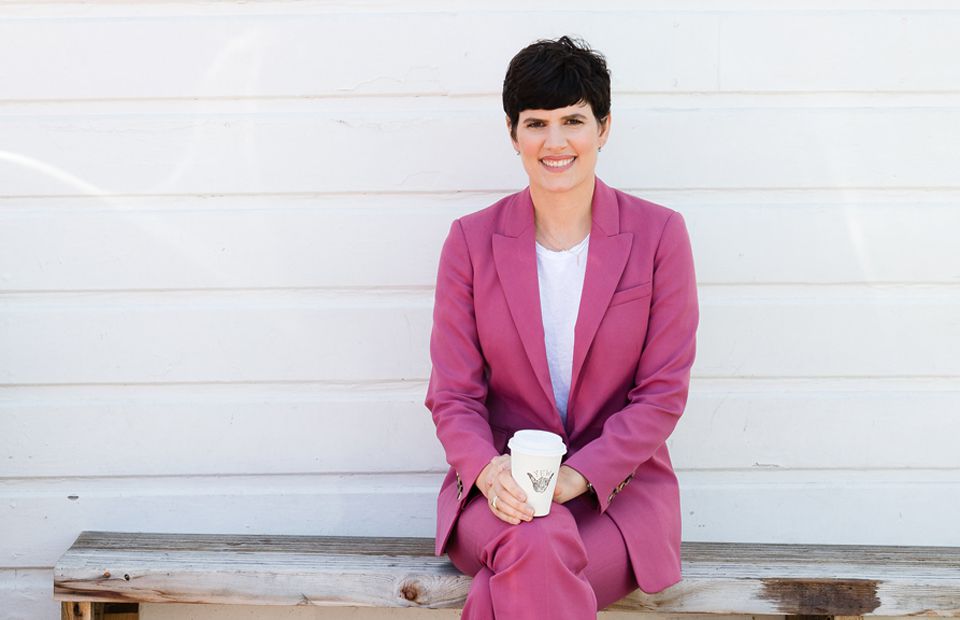You know that saying "it takes a village"? Most of us who work at media companies understand that it doesn't just apply to blood-born offspring but to the creative work we produce as well.
At goop, Gwyneth Paltrow's renowned media-empire-slash-digital-brand-slash-ecommerce-platform-slash-podcast (OK, you get it), that village feels more like a fully-functioning city—one where there's something happening at every hour and you want to stay out all night. And right smack in the middle of it all, there's Elise Loehnen, goop's Chief Content Officer.
Loehnen guides the voice of one of the cult-favorite company, though she'd probably be the first to tell you it's always a team effort. (Remember: village is to child...) We sat down to talk to her about coming into her own at Condé Nast and her move from the New York City magazine world to the West Coast, Gwyneth style. And yes, she has a few thoughts about how women-run teams are subverting traditional notions of what work looks like.
I grew up in Missoula, Montana. I’m the child of two very industrious people. My mom was a nurse, although she essentially stopped nursing to run my dad’s practice (my dad’s a now retired doctor) and she was on the board of Planned Parenthood and the school board even though we didn’t actually even go to public school, etcetera. She’s just one of those people who never stops and is exceedingly confident. My parents were very obsessed with this idea that you can’t sit around. It’s not done—although in retirement my dad’s become a total couch potato [laughs]. At home, we were taking the compost out, mowing the lawn, etc.
So I grew up working. We lived outside of town and my mom wasn’t at our disposal to shepherd us around, so we would take the public bus from school to my dad’s office and file charts. I started typing my dad’s medical transcriptions when I was probably 11. We had this computer game that was a track and field typing game—it was early days of computers and we didn’t have a Nintendo or anything—so I would play this game relentlessly and became an incredibly fast typist. So I would type his transcriptions, and then I started working for the other doctors in the practice. I would organize drug samples or whatever there was to do. I would either be reading Highlights magazine in the front or I would be in the back working.
As soon as I was able, during the summer I would work in the hospital cafeteria doing tray delivery which was incredibly depressing but really important to understand how hospitals work. Even though I spent a lot of time in the hospital with my dad, that’s very different than working in a hospital where you’re in a hairnet and you’re the lowest man on the totem pole and no one knows that you're "Dr. Loehnen’s kid." That was an unglamorous and hard and depressing job but it also taught me a lot about the importance of empathy and care. Oftentimes, I would be one of the only people these patients would interact with for hours, talking to them, helping them adjust their beds. I was a kid, but it was striking how much they needed human touch and conversation and how lonely it was.
In college, I worked in the psychology department filing grants and paperwork and then immediately got a job after school. So working has never not been part of my identity.
On When She First Felt the Call of Magazines
I think it’s a function of growing up in the country, but my mom is an incredible reader. As I mentioned, she doesn’t believe in boredom, so you have to be reading, working, doing. So I grew up reading a ton. My brother and I would have these reading competitions during the summer where we would compete for Dairy Queen sundaes—it was a program put on by the local library.
And then I was obsessed with magazines. W. Interview. Vogue. I put tear sheets all over my walls.
I was enamored with the whole world in those magazines. I thought I wanted to be a fashion designer. I was just so interested in that cultural representation.
I’d totally been fascinated by magazines always, but I thought [working at them] was a rich kids’ club. And even though obviously I’m privileged and went to Yale, I just didn’t think I could afford to ever work in magazines. It was really the early days where you made $22,000 a year in New York City, and I just didn’t think I could ever do that.
[Instead,] I thought I wanted to be a costume designer. So I got a job as an intern right after school on this comedy feature film, and I just sat in the trailer all day because there wasn’t enough to do. I had a great time—and I loved all the women in the department who gave me the chance—but I realized this wasn’t going to be sustaining for me. I ended up through a friend of a friend getting an interview at Lucky, which had published one issue at that point and they were essentially looking for a freelance assistant to do grunt work.
I got that job and because I was freelance and I was still on my parents’ insurance, I made more than $22,000 a year (although I was not making a fortune by any means), but it was a job. I’d graduated right after the crash in 2002, so managing to make enough money to get by was a win.
On Her Big Break—And Some of the Downsides
[The job] was all of the deeply unglamorous parts of Lucky, which was totally OK with me, I was thrilled to just have a place to go. So that’s where I started. Just packing boxes.
I’m a compulsive organizer, so I would stay until 10pm and reorganize the conference room and make myself indispensable wherever I could. It wasn’t manipulative, but I was operating with this idea that if I could prove to people I could be trusted with small things and make myself indispensable enough, then maybe I would get more work. And that worked for me.
They knew they could trust me, and even though at that point I hadn’t proved I had any talent outside of being efficient and reliable, they started to give me bigger and bigger and more interesting things. Kim France [founding editor of Lucky] started to take notice of me over time and would let me pitch, and then they gave me a section, and it just started to build from there.
I remember Gigi Guerra (who was doing all the city guides, which I eventually inherited from her, and was traveling all around the world writing shopping guides for cities) who was amazing, fascinating, and lovely just sort of…took notice of me. She was the one who went to Kim and said, “You should give this girl something real.” They gave me a back of the book products for charities project. She was the one who pushed me forward without me asking or even knowing what I wanted.
The worst part was that ultimately one of the editors I was working for, I usurped her. I didn’t ask for it, but they essentially gave me some of her work, some of her pages, and that felt bad. But I also understood why. But as much as I was grateful for the chance to prove myself, I felt bad about that.
On Choosing to Not Fit In
I think I never had to grapple with [impostor syndrome] because Lucky was such a distinct brand within the Conde folio. Everyone was an outsider.
Kim was such an unlikely Conde editor-in-chief and she was certainly never comfortable with that role, but she was one of the most brilliant people I have ever worked for, one of the most brilliant people of my life. An incredible writer, an incredible observer, I learned so much from her.
A lot of [the Lucky editorial team] came from Jane where they were breaking the mold early. We’d feel awkward in the Condé cafeteria. None of us ever felt we were equivalent to Vogue girls—it was just a different thing. But Lucky made it safe. We were used to being the underdogs.
When Lucky launched, it was mocked throughout the industry. You know, “How could this possibly be successful?” and then it became a really important magazine for a lot of women—a lot of really smart women. For me that was important. You can be intelligent and still be interested in shopping and we can write about things that are supposedly light but still relevant. It was so weirdly rigorous which a lot of people didn’t understand, but if you’re writing a guide to 50 kinds of bags, like, it is tough to make every single sentence different and revelatory and interesting. It is hard work.
It was the first influencer mags. It was all about cool editors and cool girls and cool girls in different cities and interesting style, divergent style. It was pretty revolutionary, I think.
On the Fading Glamour of Print Publications
I was at Lucky for essentially my whole career until I went to Time Out for a year to start a section called Seek, which was so fun. To break out of Condé was very liberating. At a monthly, you fixate on eight pages a month or whatever it is under your watch. At Time Out, I was doing 14 pages a week, so it was a good entré before web in terms of just realizing “OK, I can move much faster. I can be much more prolific.” Then I went back to Lucky because Gigi left and I took over those city guides. And then Kim was let go, and I stayed for about six months before I realized I need to do something else.
And so I went to work at Traveler because I was like “OK, this is my dream job.” And it just…wasn’t. The company wasn’t evolving as quickly as it needed to, just in terms of how people were consuming content and understanding audience in terms of appetite.
Condé got to be a one-sided conversation for far too long. That’s been one of its main struggles, I think. It wants to operate in a world where you get to be the final say and you don’t have to engage. It’s great, but you just get to ship the magazine and be like, “Enjoy my work, I know you’re gonna love it.” You know? (Laughs) It’s a beautiful thing, but I knew that that fear of conversation (and KPIs really, honestly) was keeping all of us in terrible golden handcuffs. So I knew I needed to stop thinking about the internet as the red-headed stepchild of publishing and to learn something about it.
On Finding New (Digital) Perspective
I was approached by this deeply unglamorous comparison search shopping company out here in LA called Shopzilla (now it’s called Connexity). I was in the middle of getting married, and my husband was down for an adventure, and we didn’t know how much we could afford to stay in New York and have kids and I thought, “I can do this. It will be like going to college and if I hate it, we can come back and I’ll be for a job at Conde and if I love it, I love it.”
And so we did it. It was an incredible education. I was the only creative at a company full of engineers, and it flipped everything I thought I’d learned about brand on its head. My response to their site was like, “Can we redesign all of this?” And they were like, “Sure, why don’t we AB test? You can make this what you think it should be, and we’ll test it.” And so they would test our version, and they would be like “OK, well your version is on track to lose $40,000 dollars a day.”
It was very humbling to discover that just because you have a preference doesn’t mean it’s going to inherently outperform what you don’t like. So it was a really interesting experience and I learned so much about testing and UX and web design than necessarily about content.
On Finding Gwyneth
I was also ghostwriting on the side and I’d been working on a project with Tracey Anderson which is how I tangentially got to know Gwenyth when she was still in London. I didn’t get to know her well, but we were working on site copy for Tracey and a good friend of mine, Brit had gone to work for Gwyneth in London and so when they all moved back, I went to meet with her just in a sort of informal capacity.
And she was like, “I’m ready to do this—how do I scale content?” And ultimately, it took a little while, I joined a couple months later part-time, and then joined full-time a few months after that. I was ready to go back to a brand, and I didn’t want to just write about shopping. It felt like I was coming home.
On Working with Strong Women
So many media companies are run by women, but [goop] is different because the business part of it is also run by women. I’d loved this last job where I'd worked with all men, and I’d started to think of myself as this sort of “dude,” but goop is very different and has subverted how I assumed it would have to be [to work with all women] in the sense that the culture is very…it's very...it is pretty awesome. (Laughs)
Gwyneth is an incredible boss and leader, and I have learned so much from her. On an emotional and spiritual and personal level, [goop] has impacted my work in a way that was not what I would have ever expected to get from a job. The whole thing we’re doing here is very personal to everyone on the team. It’s been a profound experience.
At goop, we’re giving our audience what they want, but we’re also giving them what they don’t know that they want yet. For me, that means, “What are new formats we could be exploring? What are new distribution platforms that we should be looking at? Who can we reach that we aren’t already speaking to?” We just launched the podcast, which was a pet project for me. We have a book in print, a magazine. Now it’s about scaling within those platforms.
Obviously, women need to be leading far more companies than they are. This is what it can look like. It can be amazing. We added a CTO to our team who is a man and a CMO who is a man is starting, and I feel like they love it as well. It’s just a totally different experience.
What's your morning routine look like?
I don’t have to set an alarm, ever, because I live with a 21-month-old. He usually wakes up at 6:30 am, when he starts banging his crib and screaming that he wants “Lechita!” Sam shares a room with his 5-year-old brother, Max, and so I mad sprint to grab him before he wakes up everyone else. Sam and I have a special inside joke now where when he sees me come wild-eyed around the corner and then he holds up his finger and says, “Shhhhhhhhhhhh.” Hilarious.
I put Sammy in our bed, make him a bottle, and let him zone out on Puppy Dog Pals while I cuddle with him and clean out my email inbox. (My husband is really good at sleeping through all of this, undisturbed.) I get out of bed at 7 am or so, and make myself an almond latte, and a glass of goopglow, and then I proceed to shoot a whole pack of Why Am I So Effing Tired vitamins, some methylated B vitamins from Pure Encapsulations, and Vitamin D from Metagenics.
Vicky, the only-reason-our-household-works-and-we-have-groceries-and-clean-t-shirts-and-bathed-kids arrives at 8am. I make her a coffee, and then we typically double-team breakfast prep and teeth brushing and outfit-making (fortunately, Sam and Max don’t seem to care what they wear, although Max recently told me that his Adidas running shoes “really only work with long pants,” which I credit to his father).
I’m typically not hungry in the morning, so I don’t eat breakfast, though I sometimes find myself snacking on Sam’s leftover (possibly half-chewed?) waffles because I have an aversion to wasting food.
I get on email from about 8:15-8:45 am, and my husband Rob and I chat about our day ahead, and then I jump in the shower. We are in the high-drought area here in LA, and Rob and I made it a mini-challenge to be exemplar Angelenos with our water usage so I am in and out in under 2 minutes. I tossed most of my wardrobe a few years ago because I wasn’t wearing much of it, and replaced it with a lot of good basics, including a bunch of G. Label, our clothing line. It makes it a lot easier and faster to get out of the door in the morning because I’m not paralyzed by choices. I blast my (short) hair with a blowdryer, put on some really thick day cream, a little concealer here and there, and then Max and I are out the door. He goes to a really sweet co-op pre-school that is blessedly two minutes from our house and so we have a short car ride where we chew Spree gum together (his weakness) and chat, and then I walk him into class (sometimes he even lets me carry him for an extended hug), toss his gum, and chat with some of the other parents before I bolt to work.
I get to the office at 9:22 am, and if I don’t have a 9:30, I’ll go to the local canteen, Bondi Harvest, for another almond milk latte—I like having a little buffer before I dive into my computer. If possible, I’ll drag someone from my team so we can have an impromptu one-on-one, which is always better over a drink.

Your personal hero?
Hillary Clinton. Regardless of political affiliation, I think we can all agree that she is a badass.
One thing in your bag that would surprise us?
Metal straws.
Best working mom tip?
Get your hormones tested and a micronutrient lab done. Supplement! Make sure you are nutritionally sound otherwise the fatigue can get out-of-control…
Article/project you’re most proud of?
In that vein, I’m really proud of the work we’ve done to make postnatal depletion a conversation—it wasn’t something I had ever seen discussed, but as someone who has experienced it, I can attest that it’s important we collectively address it.
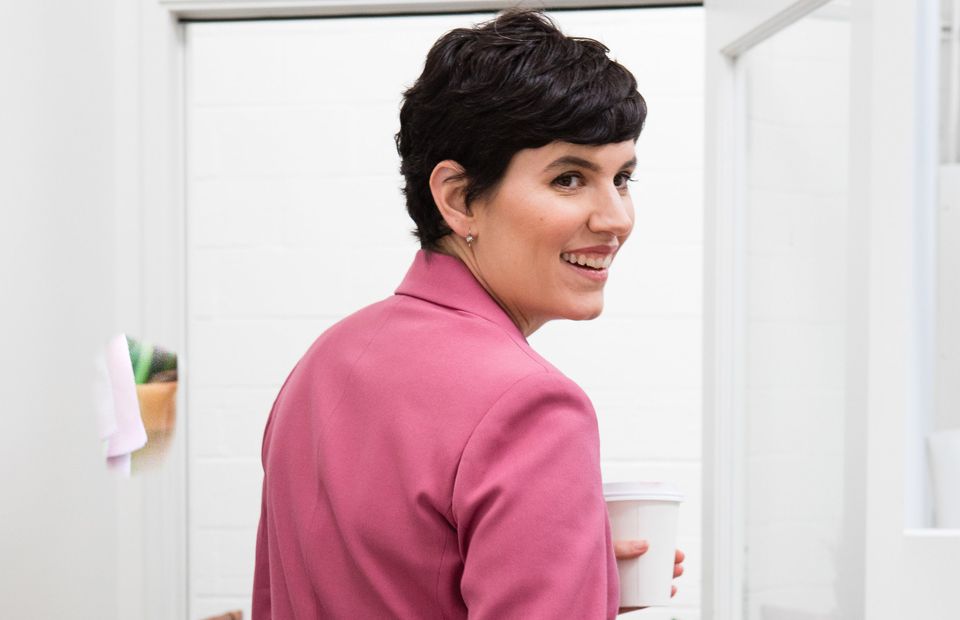
Best kept secret in LA?
Bao Foot Spa, super clean joint where you can get a 60-minute chair massage for $35.
What about New York?
I really love Takahachi in Tribeca—reliably good, can always get a seat, love the soba salad.
Guilty habit?
I don’t believe in guilt, truly.
What would your alternate universe dream job be (if you weren’t in editorial)?
I would love to be a big animal vet; I grew up with horses, and I miss them.
You May Also Like
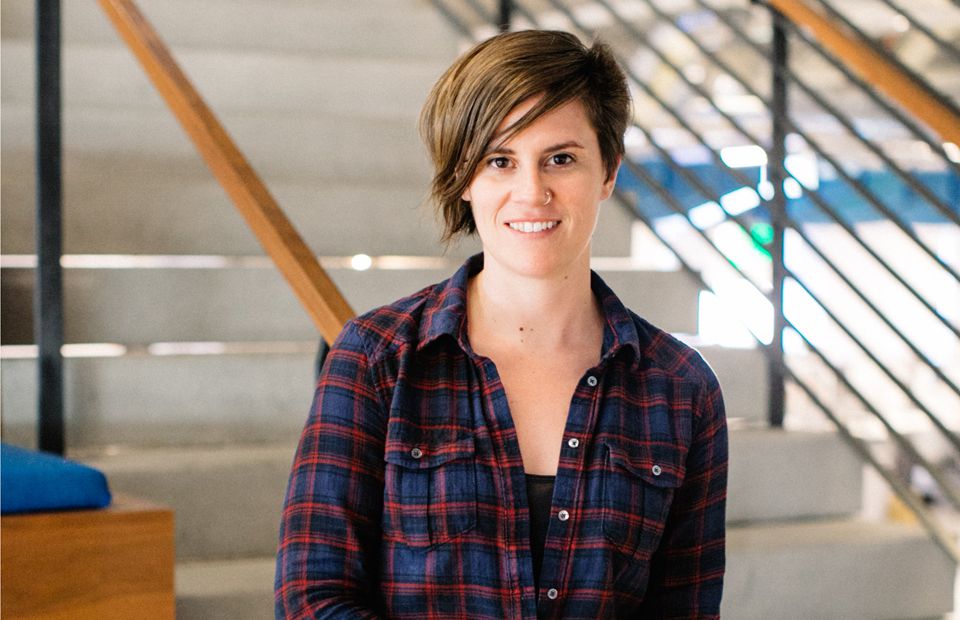
Media
How to Use Positive Reinforcement at Work—and Other Advice from a Pandora PM
"My advice to anyone who wants to get into product management is: check your ego at the door."
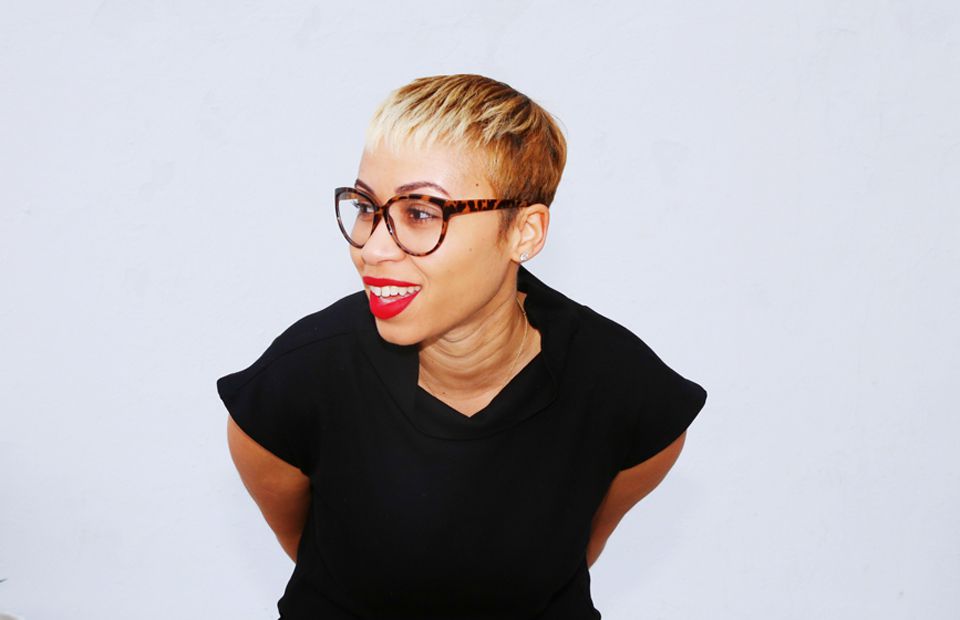
Media, Communications + Public Relations
How to Take Risks, Make a Switch, and Find a Career You Love—From a Woman Who's Done It 4 Times
Making your wildest dreams come true starts with understanding yourself—and Ahyiana Angel can help.
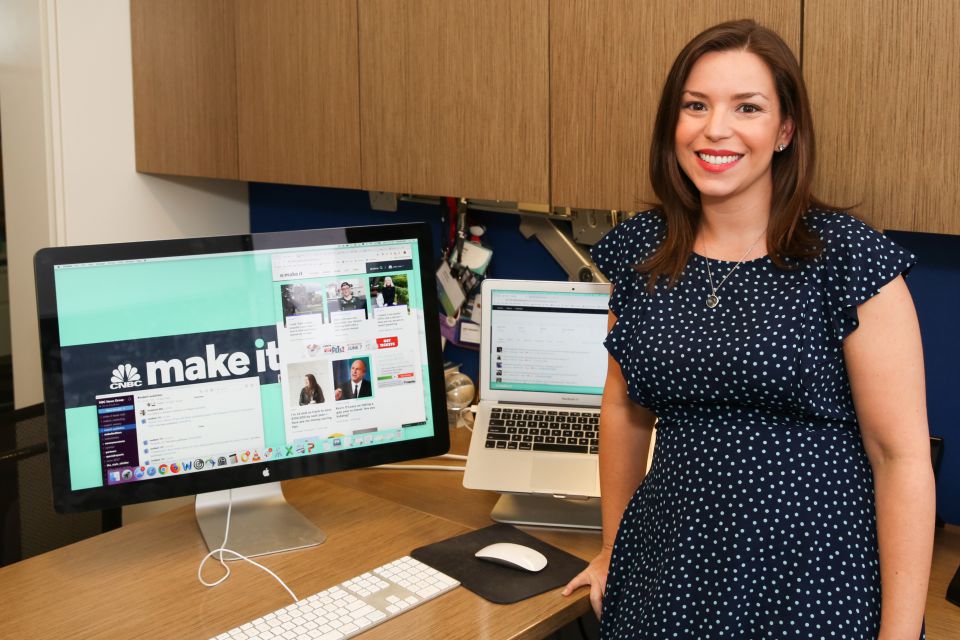
Communications + Public Relations
Creating Content That Empowers Audiences with CNBC's Digital VP and Managing Editor
This week, we interviewed Jenna Goudreau, the VP and managing editor of CNBC Digital. Let's learn how she keeps her powerhouse content creation machine going.
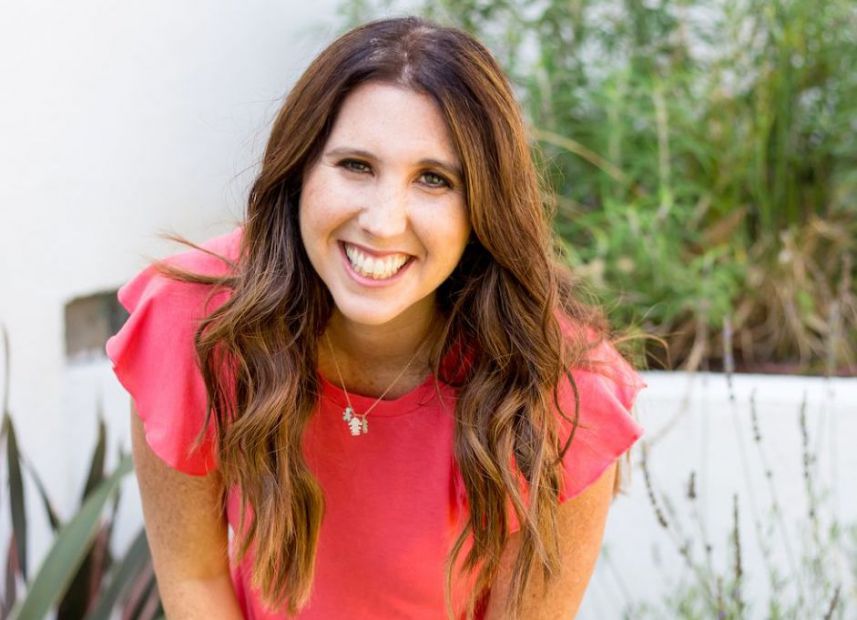
Entertainment
Working Creatively From Home with Cathy Heller
Cathy Heller is a singer, songwriter, entrepreneur, mother—and now, an author. Determined to lift others up to the "happiest versions of themselves," this queen of the hyphenated job title, leads by example. She shared how to build a fulfilling career in a creative field—all while working from home.
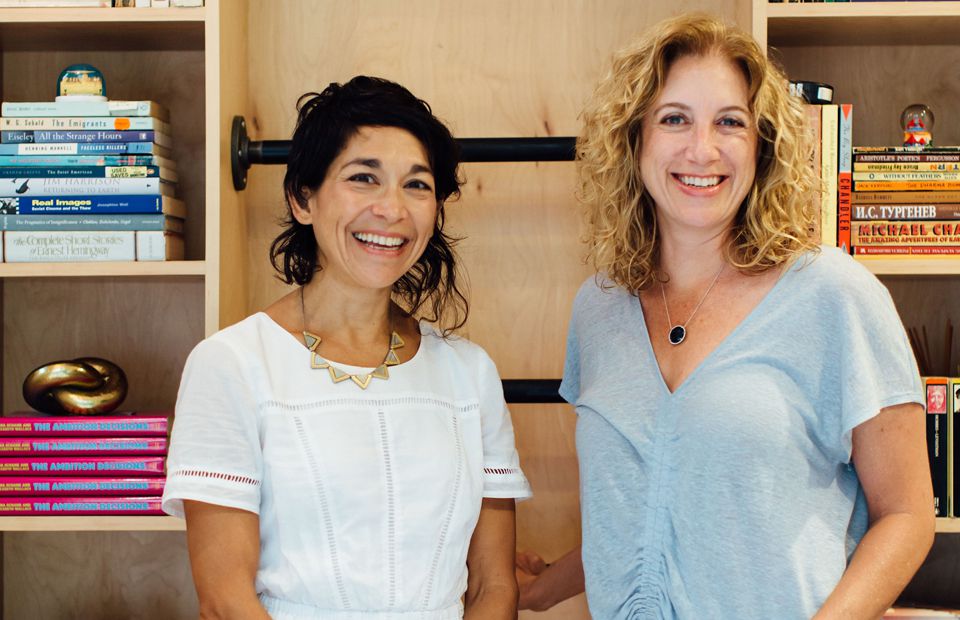
Media
Women, Work, and What It's Like to Write With Your Best Friend—From the Authors of The Ambition Decisions
"We should all give ourselves permission to challenge the things we think can’t be challenged."
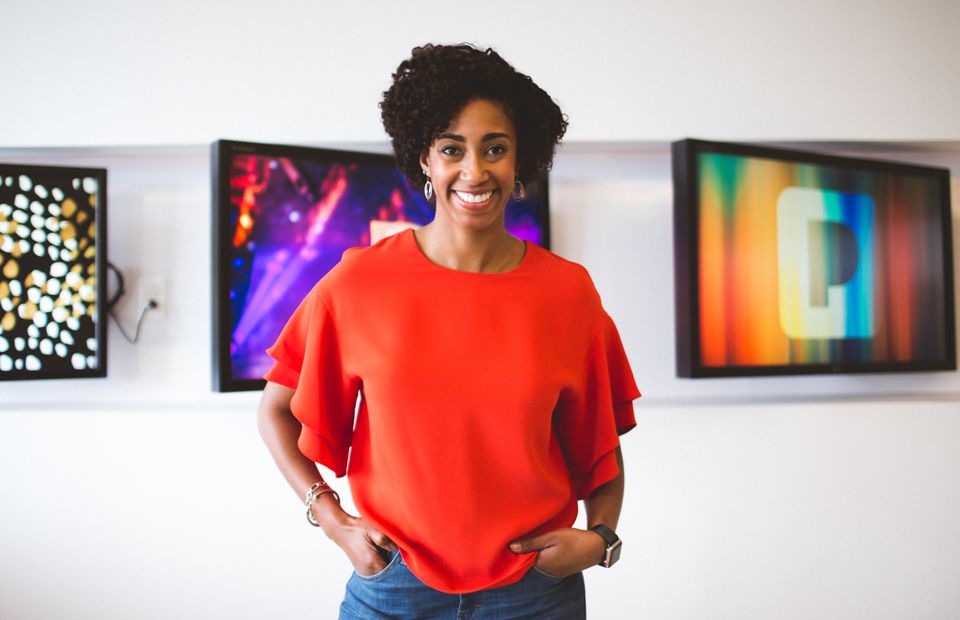
Media
A Director at Pandora on Staying Present, Celebrating Others, and Learning From Failure
"Share your wins, but most importantly, share what your growth areas are, share when you fail, share how you bounced back."
Get the Best Career Advice Delivered To Your Inbox
Join our newsletter to stay in the loop.
